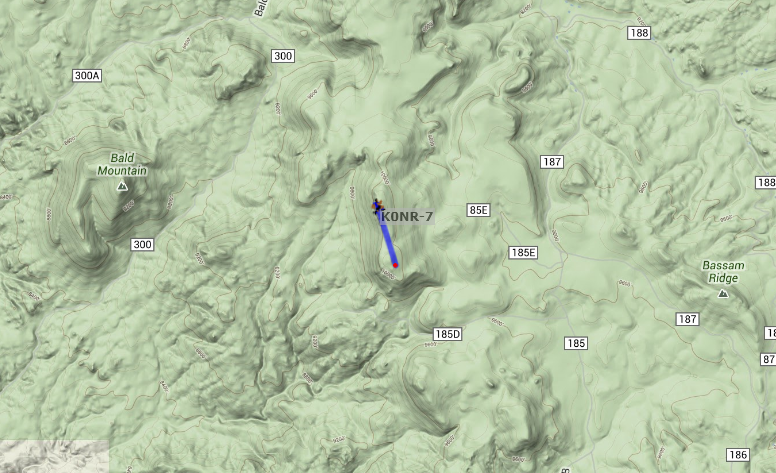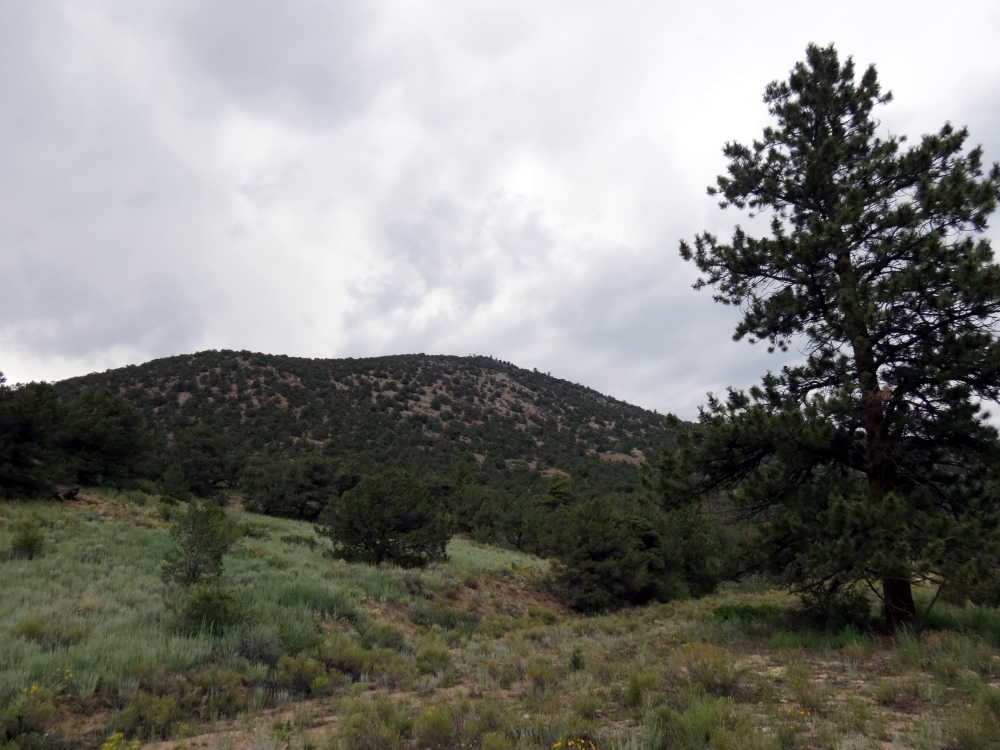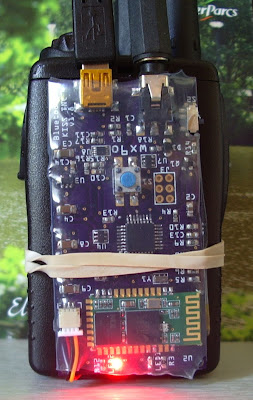Archive for the ‘aprs’ Category
 Radio shield woes
Radio shield woes

This rather grainy photo is probably going to be the last one of the Radio Shield. Mainly because of its un-christmas like behavior. the little monster has been misbehaving for a a while. It decides when and if it wants to decode any packets, which is pretty mean if you ask me and to cap it off a new fault has occurred, the LCD screen is very intermittent. The way it works is a bit like this.
1. Plug it in and watch it power up and display the splash screen – all good so far
2. Turn on the rig and tune into 144.800MHz
3. Send it a packet from my VX-8G and watch the LED flash green to say its happy listening and then display the callsign, SSID and associated data
4. turn it off and enjoy some dinner
5. Turn it back on. Get the usual start up message
6. Do nothing else regardless of what I throw at it.
The really annoying thing is that the serial monitor displays other messages that should go onto the LCD bu they stubbornly don’t bother to show themselves. There is definitely a fault somewhere on here so I’ve had to email Argent Data for a bit of a clue. Other little issues are that you can set the contrast or brightness by code (which you should be able to do).
It seems as though you get intermittent packet decoding and intermittent LCD displays, even if you wire up a few others to test. Hmmmm, perhaps I’ll tackle the other parts to the code enhancements later.
Humbug
 My APRS broadcasts received by the ISS
My APRS broadcasts received by the ISS
I screen capped the evidence from the website http://ariss.net which documents Amateur Radio data digipeated by the ISS. In order to appear on the page, a position report in a valid APRS format must be received and then digipeated through the ISS system, then be heard by an internet gateway station, which then forwards it on to the APRS Internet System.
Okay it sounds a bit more impressive when put like that ;-)
 |
| The map showing received stations, M6GTG is me! |
 |
| The detail of my report |
 |
| List of stations with time stamps, showing me! |
 |
| List of digirepeated messages |
It consists of a small embedded PC running embedded XP, the sound card output was connected to the microphone input of my Baofeng UV-5R+ operating in VOX mode set to 145.825MHz. The radio was connected through my power/SWR meter in to the X-50 antenna. I used the UV-5R+ instead of the UV-3R since it has a little more power and better audio. I had a SWR of around 1:1.2 and outputting 4W.
The software I used was UISS from ON6MNU and the AGWPE packet engine. It has taken a little time to work out how to setup UISS into auto-beacon mode and putting in the time of the next decent pass (approx 45 degrees elevation) I set it to broadcast position and text data messages every 30 seconds.
| The embedded PC running UISS |
| UV5R+ in VOX mode on 145.825MHz |
| The power meter showed 4W output, SWR about 1:1.2 |
I stood out in the dark, hoping to see the ISS pass over but the cloud cover was too thick and monitored using a handheld scanner. I heard my transmissions obviously and the ISS broadcasts as it repeated received messages, but I didn't know if any were mine till I got back to the PC.
 Two SOTA Activations: W0/SP-099 and SP-115
Two SOTA Activations: W0/SP-099 and SP-115
Lately, I have been focusing on activating the SOTA (Summits On The Air) peaks near our cabin in the mountains. The basic idea is to identify a SOTA summit, hike to the top and make a few contacts on VHF. On Friday, my spousal unit (Joyce, K0JJW) and I decided to head out to an unnamed peak (W0/SP-099), southeast of Buena Vista, CO. By no coincidence, this summit had not been activated yet, so we’d get the esteemed honor and glory of being the first.
For lesser known summits, a bit of research is required to figure out the route. My first stop is to check the SOTA database for basic information on the summit. I’ll usually have to dig further using ListsOfJohn and SummitPost. ListsOfJohn is an incredible database of topographical information, listing every summit along with information such as elevation, lat/lon, rise, etc. (The Colorado SOTA information was gleaned from ListsOfJohn.) SummitPost will usually have more detailed information on a summit but only for the more popular ones. The SOTA Mapping Project is another excellent resource with very useful interactive topo maps. And, of course, I also dig out the US Forest Service map for the area, which often gives the best view of access roads.
We drove the Jeep to within a mile of the summit and started hiking up. I posted our route information on ListsOfJohn, so take a look there for that information. The summit is unnamed, so it is referred to by its elevation: 10123. I had my Yaesu VX-8GR burping out APRS packets which were plotted on aprs.fi when we reached the summit.
When we reached the summit, I spotted myself on the SOTAWatch web site using the SOTA Goat app on my smartphone. More importantly, the night before the hike, I sent an email to some of the radio amateurs that were likely to be within VHF range. That paid off and I worked Jim KD0MRC, Walt WZ0N and John K3NOQ on 146.52 MHz FM. Jim was hiking to Harvard Lakes above 10,000 feet, so it was special to be able to contact him on the trail. A little later, I caught KV4AL who was mobile near the top of Mount Evans. While only one contact is required to “activate” a summit, four contacts are needed to earn SOTA points, so I was happy to make these four QSOs. My gear was a Yaesu FT-60 driving a 3-element Arrow yagi antenna.
In addition, Joyce and I generally work each other on the SOTA the summit. The SOTA rules say that “QSOs with others within the same Activation Zone do not count towards the QSO total” which means that one of us needs to hike down a bit to get outside of the activation zone (75 feet vertical feet from the summit). We take turns doing this so that each of us activates the summit and makes a contact with the summit.
We took a round about path back to the Jeep and headed for Bald Mountain. At this point, we were both very tired and the thunderstorms were moving in. We decided to at least check out the access to Bald Mountain (Wo/SP-115) even if we didn’t climb it that day. It turns out that there is a 4WD road that goes to the top of the mountain, so we drove to the summit. The road is very rough in a few spots but the Jeep handled it nicely. At the top, we hiked back down a bit to meet the non-motorized ascent requirement for SOTA. We also did our “work each other” technique while on the mountain so that we each had a contact. I was not able to raise anyone on 146.52 MHz but I did catch Carl K5UK on the 146.745 MHz repeater and worked him on simplex. By this time, it was raining with lightning getting closer, so we abandoned the summit and headed back to the cabin.
Thanks to the guys that took the time to contact us on the two summits.
73, Bob K0NR
 Argent Data Radio Shield
Argent Data Radio Shield
I’m a bit of an Arduino fan. I’m also interested in APRS. So I was keen to get hold of something that would bring the two together. Enter the Argent Data Radio Shield
I bought one a while ago and used it to make my shack clock. Arduino’s come in a lot of shapes and sizes but the Uno is probably the simplest. You can add bits and bobs to them through stack-able ‘shields’. One of these shields is the Argent Data radio Shield. I ordered mine before going on holiday and got a bit done over on the customs charges but have assembled the little thing and put together one of the simple sketches to show the thing working.
All ready on the bench
All in all the assembly was pretty straightforward with a few parts to put together and not a lot else. You don’t get much in the way of guidance but the suppliers website has all the pertinent information and it shouldn’t challenge most who are ok with a soldering iron. As shown here as a finished article
Ta Daaaaa
Below is a little video clip of the thing running a simple sketch from the website. Instead of the output being to an LCD I’ve sent it to the Arduino IDE serial monitor. This is easily done by not actually putting an LCD on the headers. All nice and simple.
 A tiny Bluetooth TNC
A tiny Bluetooth TNC
One of the things I’ve been up to the last few weeks is testing a new Bluetooth TNC made by Rob WX9O who is selling them as Mobilinkd. I had to put testing on hold while my Motorola smartphone went away to be repaired (by BuzzBox whom I can recommend highly.) In the meantime word got round and Rob sold out of these gadgets before I could write about it.
The price was around $49.95 which I thought at the time was amazingly cheap and probably explains why they are all sold out at the time of writing. The module is a small PCB slightly smaller than a Baofeng UV-3R and if you remove the belt clip it can easily be fixed to the back of it. My picture shows it strapped to the back of one of the Baofeng’s predecessors, where it makes a nice inexpensive and compact APRS tracker. The board and it’s battery (which can be charged using a USB cable as shown in the photo) are shrink-wrapped in a tough translucent plastic casing.
Ready-made cables are available. Rob sent me a Kenwood-format two-pin connector which fits the later model Baofengs and the two worked together perfectly. The audio levels were just right on both transmit and receive.
Yes, receive. This is no mere tracker. It’s a full KISS TNC and decoded all the packets received by the Baofeng. The software used was the latest APRSDroid running on my Motorola Milestone (a.k.a. Droid) smartphone. Droid and TNC paired easily and made an effective APRS mobile station.
I did try to pair up the TNC with APRSISCE on an HTC Touch Pro running Windows Mobile 6.1. The two devices paired but could not connect as the Bluetooth software did not recognize the TNC as a valid device type. I think that is a limitation of the Windows Mobile Bluetooth software rather than the TNC module.
If you are interested in APRS and would prefer to do it over the radio rather than a cellular data connection (real hams use RF, right?) then this is a nice toy to play with.
 New APRS IGate for Aberdeen
New APRS IGate for Aberdeen
Kit Hall GM4EMX has sent details about a new unattended APRS iGate that will be located at his QTH in Aberdeen. The callsign will be MB7UAB.
Kit told me something I didn’t know about the allocation of callsigns for APRS stations in the UK.
- All APRS station callsigns start with MB7U (for Unconnected, I would guess.)
- A single letter following the U denotes a digipeater (e.g. our local digi MB7UQ)
- Two letters following the U denote an iGate.
I hope Kit’s new iGate will soon spark some activity in the Aberdeen area which up until now has been pretty much an APRS desert.
 Yet Another APRS Client
Yet Another APRS Client
An apt title for this post, but also for the software in question. Yet Another APRS Client (YAAC from now on) is a new program written by Andrew, KA2DDO that has recently entered beta test status. I stumbled across it a few days ago and am now running it on my G4ILO-2 VHF iGate.
 |
| YAAC map display with US Geological Survey topographic data.) |
YAAC is written in Java so it runs equally well on Windows, Mac and Linux platforms as long as you have a recent Java runtime installed.
YAAC is open source software and uses open source mapping (Open Street Map – OSM). APRSISCE does too, but whereas it uses bitmap tiles, YAAC uses vector-based map data. This makes the maps look a bit different (more as if they were drawn by a spider.) You can easily add topographical data from the US Geological Survey (the screenshot above shows this.) YAAC also supports the use of scanned-in maps but I haven’t tried this.
YAAC is very easy to use. There is a wizard to help you set up the program, though there is also an expert mode that allows you to get to all the settings directly. There are far fewer things that can be changed than APRSIS32 has which is one reason it is easier to use, but YAAC’s user interface is more standard. A File menu is on the left of the menu bar, Help on the right, and all the configuration settings are on a multi-tabbed dialog box not nested in three levels of menus. YAAC would be an ideal program for someone new to APRS, which is not to belittle the program in any way as it does all the things that most users would be perfectly happy with.
YAAC supports a wide range of TNCs including TNC2 compatibles and the Kenwood mobiles. In APRS mode the Kenwood D700/D710 can only be used receive-only. In Packet mode the Kenwood can be used as a KISS TNC. Believe it or not I hadn’t realized it had this capability until Andrew pointed it out to me. Just two commands (KISS ON, RESTART) are needed to put the Kenwood into KISS mode. The other thing that confounded me for quite a while is that the Kenwood TNC expects hardware flow control. Once that setting had been made everything started to run perfectly.
 |
| YAAC’s “Radio View” |
One disadvantage of using the Kenwood D700/D710 in Packet mode is that the rig’s display doesn’t show any APRS information.However, Andrew has implemented a rather neat “radio view” which emulates the Kenwood display. The only extra thing that would make the emulation complete would be to limit it to only those packets received over the radio. With an APRS feed covering a wide area the display changes too quickly to be readable.
YAAC doesn’t provide as much information about APRS objects as APRSISCE does.The window on the right is what you get when you click on one of the G4ILO icons. When two or more stations are co-located the calls overwrite one another making them unreadable. APRSISCE manages to position the calls so they don’t overlap at all.
Because YAAC uses vector graphics it does a better job of displaying APRS icons and even orients the icons of moving objects in the direction of motion. Zoom in to street level and you’ll discover that icons are provided for points of interest. I was quite impressed when I saw what was displayed for our small town of Cockermouth. I think these objects come from OSM data.
 |
| Street-level display of Cockermouth including places of interest |
You might get the impression that I really like this new APRS client. It appears to be well designed, well written and is well supported by Andrew, its developer. It’s a very impressive piece of software. I originally intended just to try it out for a couple of days but I think I’ll stick with it for the time being.
















